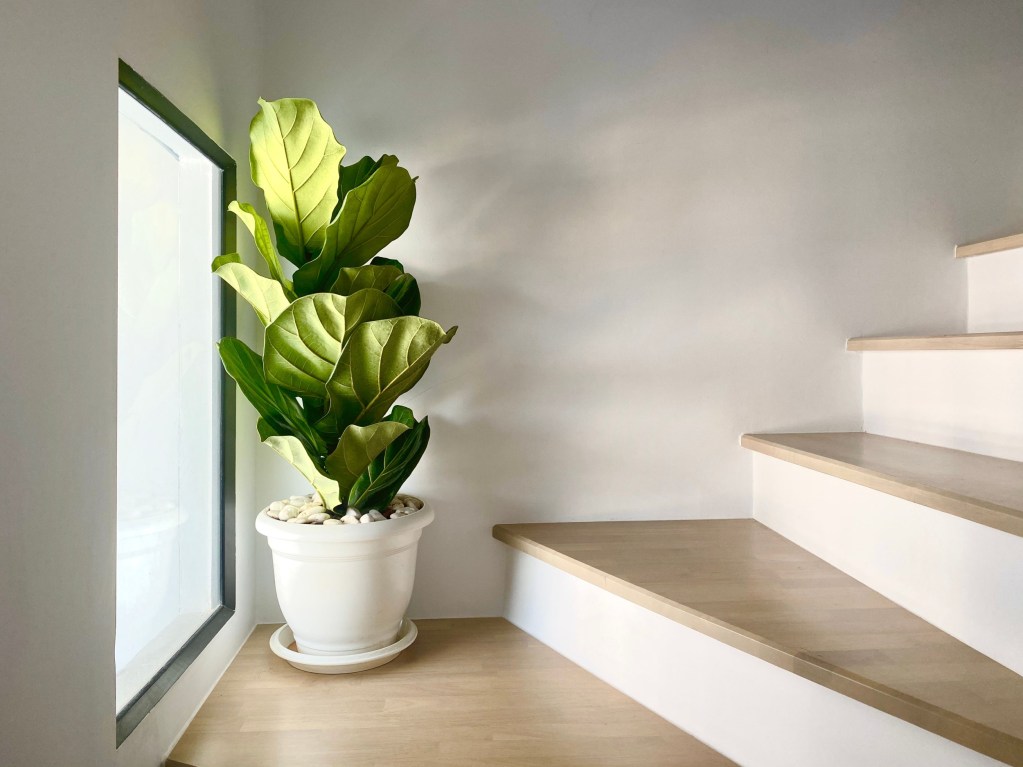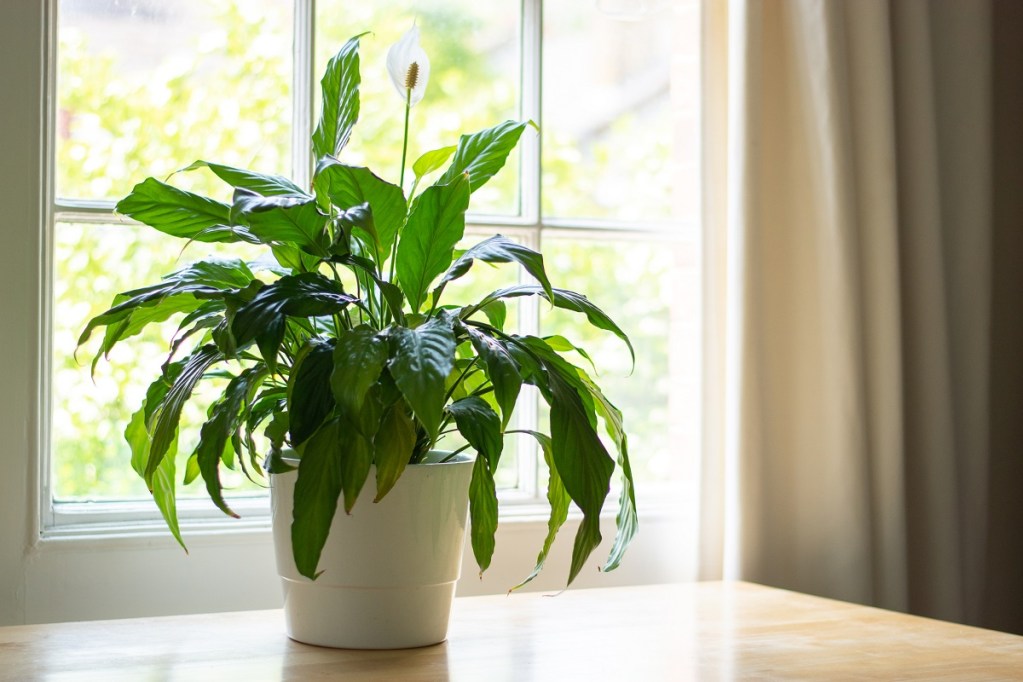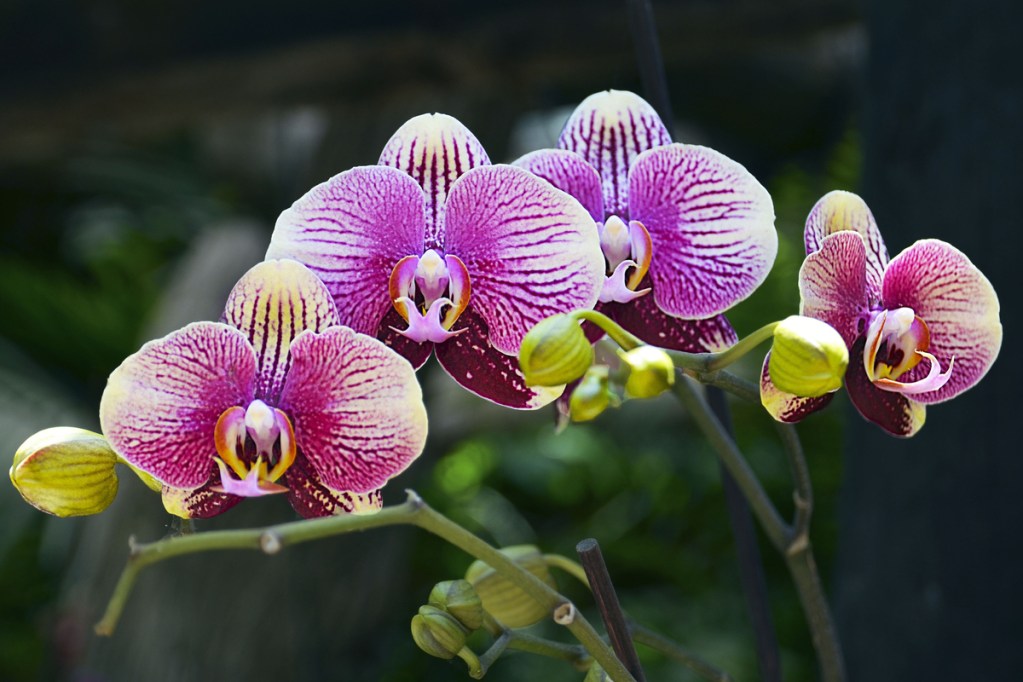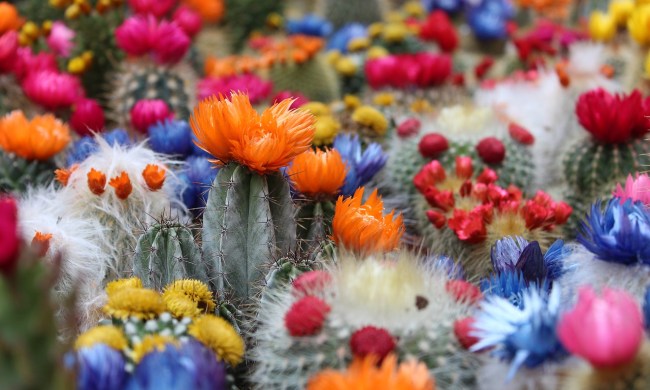One of the best things about gardening is that it’s an incredibly flexible hobby. If you’re a beginner or don’t have a lot of time or space to invest in plants, there are many easy-to-grow plants you can choose from. What if you’re looking for something a little more challenging? While many people love an easy-going pothos or philodendron, plenty of challenging plants exist out there. From fiddle leaf figs to orchids, here are eight high-maintenance plants that are worth the extra care they require!
Fiddle-leaf fig

Fiddle-leaf figs are gorgeous with their thick, leathery leaves and prominent veins. However, they’re not necessarily the most beginner-friendly plants as they do tend to be, well, fiddly. When your leaves drop or start to turn red (a phenomenon called “edema”), you likely have a case of overwatering. In general, you should water your fiddle-leaf fig when the soil dries out completely — add a diluted liquid fertilizer during the growing season. For a thriving fiddle-leaf fig, give your plant plenty of bright indirect sunlight and clean the leaves so they can photosynthesize properly.
Caladiums

With gorgeous pink, white, and green leaves, tuberous caladiums make the perfect ornamental plant. As houseplants, however, they can be demanding since they require not only bright, dappled light and moist soil but also high humidity levels. In addition to keeping your home humid, you want to give your caladiums a consistent room temperature between 65 and 75 degrees Fahrenheit because they hate extreme temperatures. On top of all of this, caladiums will inevitably die out. But after the leaves die, you don’t necessarily need to toss out the plant — keep dormant tubers in their pots and wait until they grow back again.
Pinstripe calathea

A pinstripe calathea can be a stunning addition to any plant collection with its pink-striped, glossy foliage. Unfortunately, calatheas, also called prayer plants, are almost synonymous with brown, crispy edges. Calatheas are sensitive plants, so this symptom can be due to a gamut of different reasons: underwatering, unfiltered water, high temperatures, and/or lack of humidity.
These high-maintenance plants require a weekly to biweekly watering schedule, and you’ll usually want to err on the safe side and use filtered water so your plant doesn’t experience mineral buildup. Calatheas are also sensitive to heat exhaustion, so keep your home temperature between 65 and 75 degrees Fahrenheit. And last but not least, these sensitive plants need humidity to live, so have a humidifier handy or leave them by a tray of water.
Boston fern

With striking, protruding fronds consisting of tiny leaves, the Boston fern can easily add height and texture to your space. However, it’s notorious for shedding. As with many other ferns, this variety loves frequent watering, but even more so, it loves humidity. To keep its leaves lush, green, and intact, keep a humidifier by your fern or leave it in a humid spot of your home, such as the bathroom. The Boston fern will also appreciate bright indirect light to flourish. But be careful if you leave this plant outside on the porch — excessive direct sunlight will scorch leaves.
Begonia maculata

With bold white polka dots on dark green leaves with red undersides, it’s easy to see why plant parents gravitate towards the begonia maculata. That said, this striking plant comes with a learning curve. It needs consistently moist soil and high humidity levels, so invest in a trusty watering can and humidifier. Just be careful not to overwater, which can cause wilted stems and moldy soil. The maculata also appreciates bright indirect light — direct light will scorch its leaves, while too little light will fade its color. It’s really all about finding balance!
Peace lily

The peace lily’s name is somewhat deceiving since it might make you feel more vigilant than peaceful. The peace lily features elegant, glossy green leaves (that can sometimes display white variegation) and attractive white spathes. Lovely as it may be, this plant has a reputation for being a drama queen.
When you underwater it, it can undergo fainting spells where the leaves immediately wilt. One too many fainting spells can cause this plant to weaken over time, too. Sometimes, you might even overcompensate by overwatering and causing the leaves to go yellow. While you can tell when many plants need watering by feel, a moisture meter and consistent watering schedule will help your peace lily thrive.
Orchid

Orchids are beloved for their beautiful and fascinating flowers, but they have a reputation for being high-maintenance. As with most houseplants, orchids require bright dappled sunlight and steady temperatures. The two most prevalent issues that orchid enthusiasts face are humidity and watering.
High humidity is a must for orchids, so they’ll fare best next to a humidifier or in a more humid area of the home. Another common problem with orchids is inconsistent watering. You want the potting mix to almost dry out before you water your plant again. A well-draining growing medium will be best for orchids: use a combination of loam, peat moss, sphagnum moss, and sand or perlite.
Alocasia

Alocasia plants come in many striking sizes and shapes, but they are most commonly known for their angular leaves that are primarily dark with pale veins and a velvety texture. These rainforest plants can be difficult to grow indoors, especially if you want them to thrive rather than just survive.
Rich, well-draining soil and plenty of water are two of the most important factors when it comes to alocasia plant care. They also need to be kept warm. Ideally, your alocasia plant should be in bright, indirect light or dappled shade. Direct sunlight can burn their soft leaves, so be careful!
High maintenance is undoubtedly a loaded term, but it can be highly rewarding when it comes to plant collecting. The extra time you spend watering a Boston fern can result in lush, green fronds, and investing in a humidifier for your calathea can encourage abundant growth. With some tender, loving care, you too can make a notoriously fussy plant thrive in your home.




